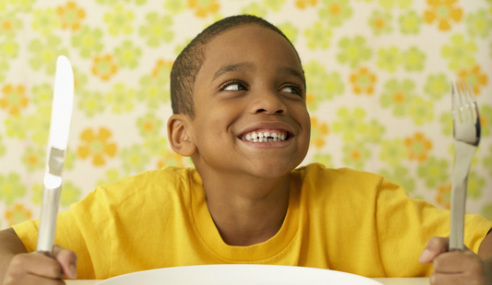|
Parenting magazine
Myth: Dairy products make a child’s cold worse. Reality: It’s just not true that dairy products increase mucus production or thicken nasal secretions. The cold virus itself causes mucus production in the nose and the back of the throat. Dairy products simply coat the lining of the back of the throat, making it feel funny. You can continue to offer your child milk or other dairy products when she’s sick with a cold. If she won’t drink milk, don’t worry. Simply give her other liquids—water, juice, or chicken soup—until she feels better. Even if she doesn’t have much of an appetite, it’s important that she gets plenty to drink to ward off dehydration and keep mucus flowing through her nasal passages. Myth: You must be vigilant when introducing foods into a child’s diet, because many kids have food allergies. Reality: Food allergies aren’t nearly as common as people believe. Almost one in three parents thinks her child has food allergies, but only 6-8% of kids really do. Food allergies occur when the immune system attacks the otherwise harmless food and causes a reaction such as hives, eczema, vomiting, diarrhea, etc. And though parents frequently blame such reactions on a long list of edibles, the reality is that milk, eggs, peanuts, tree nuts (such as cashews and walnuts), wheat, soy, fish, and shellfish account for 90% of food allergies. If you suspect that your child has an allergy, discuss the likely offender with your pediatrician. Myth: Milk is essential for strong bones. Reality: Milk is one of the best sources of calcium, but if your child won’t drink it, she can still get adequate amounts of the bone builder from other foods. These include yogurt, cheese, calcium-fortified soymilk, broccoli, tofu, dark, leafy greens, and calcium-fortified, 100% juice (such as orange). What matters most is that your child meets the recommended daily intake: 500 milligrams of calcium a day for kids ages one to three; 800 milligrams for four- to six-year-olds; and 1,300 milligrams for kids nine and older. Myth: When your child’s sick, it’s best to feed a cold and starve a fever. Reality: You should never withhold food from a child, doctors say. Your child needs all the nutrients and fluids he can get to fight an infection. But if he isn’t up to eating full meals, don’t worry. Sick kids should be allowed to eat what they feel like and listen to their bodies. It’s more important for them to drink plenty of liquid to prevent dehydration. They’ll make up calories pretty quickly once they’re feeling better. Myth: Juice is a healthy thirst quencher. Reality: Though 100% juice is definitely more nutritious than sugary drinks, it shouldn’t be the only drink your child reaches for when she’s thirsty. There have to be limits on a child’s juice intake. Otherwise, it will decrease her appetite for more nutritious foods and may displace milk as a beverage. What’s more, because of the high natural sugar content of juice, drinking an excessive amount can harm teeth or cause stomach upset in babies. Nutritionists recommend limiting a toddler’s juice consumption to about four to six ounces a day; older kids should try not to drink more than 12 ounces a day. Offer juice as a treat, not a thirst quencher. Water is a better choice when your child is thirsty.
0 Comments
Leave a Reply. |
Categories
All
Archives
March 2024
LinksFree Children's Stories |


 RSS Feed
RSS Feed
